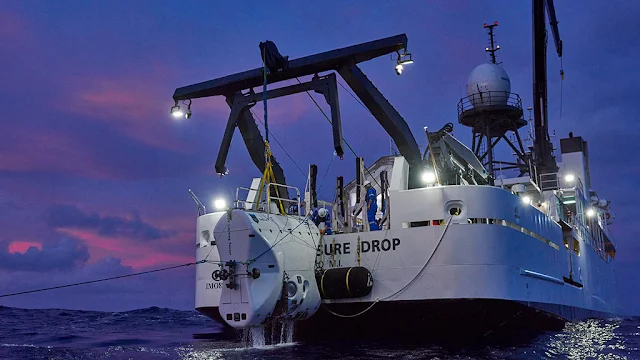Omega Ultra Deep world record for the deepest dive in history. Last May, American adventurer Victor Vescovo established the new world record for the deepest dive achieving a depth of 10,928 meters / 35,853 feet piloting his submersible Limiting Factor to the bottom of the Mariana Trench, the deepest point on planet Earth. Along for the ride – and performing perfectly at depth - was Omega’s Seamaster Planet Ocean Ultra Deep Professional. The Omega Seamaster Planet Ocean Ultra Deep was used in the deepest dive in history.
Last May, American adventurer Victor Vescovo established the new world record for the deepest dive achieving a depth of 10,928 meters / 35,853 feet.
During a 12-hour mission, he successfully piloted his submersible Limiting Factor to the bottom of the Mariana Trench, the deepest point on planet Earth and the first of five manned expeditions to reach the deepest point in each of the five oceans.
Along for the ride - and performing perfectly at depth - was Omega’s Seamaster Planet Ocean Ultra Deep Professional.
In order to create a timepiece suitable for The Five Deeps Expedition, Omega introduced new technologies that could be adapted to dive watch manufacturing in the future.
To withstand the exceptional pressures and loads on the watchcase, Omega’s Ultra Deep was subjected to extensive finite element analysis simulations with the goal to limit the thickness of the timepiece as much as possible without sacrificing its resistance. The result was remarkable as the watch is only 28 mm thick.
The bezel body, casebody, caseback and crown of the watch were machined cutoffs from the grade 5 titanium hull of the Limiting Factor submersible.
Similar to the viewport assembly on a submersible, the sapphire-to-case assembly on a full ocean depth watch was an area of concern. To spread the stress distribution, Omega took inspiration from the loadbearing conical design of the Limiting Factor's viewports, engineered to minimise pressure on the inside edges of the cone. Liquidmetal was used to ensure a firm yet flexible sapphire-to-casebody assembly. This innovative patent-pending hot form bonding made it possible to avoid the use of polymer seals and to reduce the sapphire’s thickness.
Fully integrated into the titanium casebody, the lugs of the Seamaster Planet Ocean Ultra Deep Professional are left open to lower the risk of exceeding material limitations at full ocean depth, as both the watch and the strap can be subjected to high traction loads. They are called “Manta” lugs due to their distinctive look.
The expedition logo is located at the center of the caseback inside concentric circles evoking the Multi Beam sonar technology. Relevant information including the model, reference number, materials, DNV-GL certification, and the words - tested 15,000m / 49,212ft - are all laser-engraved.
Three Omega Seamaster Planet Ocean Ultra Deep timepieces made the dive. Two attached to the submersible’s robotic arm, another to a Lander. Omega’s choice of strap material drew on the brand’s experience in space. The combination of polyamide strap and Velcro closure is closely associated with the straps used during Apollo missions.
All of the watches were pressure tested at Triton Sub’s facility in Barcelona. The chosen maximum pressure is linked with tolerances required in the Mariana Trench, but to be extra sure and to comply with dive watch standards, OMEGA insisted on adding a 25% safety margin, which meant the watches had to perform perfectly at an astonishing 1,500 bars / 15,000 meters.
Post-dive, all watches were put through the rigorous tests over 10 days set by the Swiss Federal Institute of Metrology (METAS). Even after their extreme underwater journey, each watch achieved Master Chronometer certification. omegawatches.com





















COMMENTS